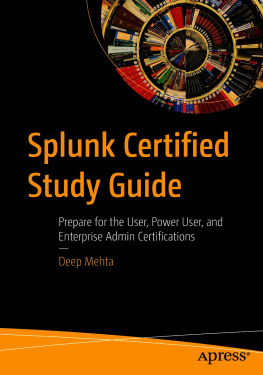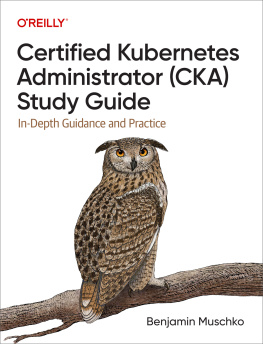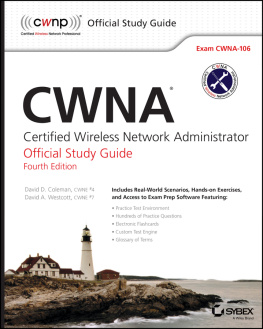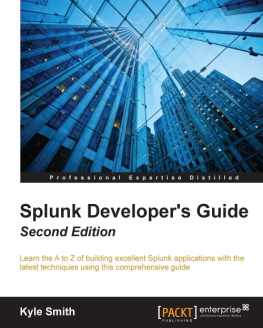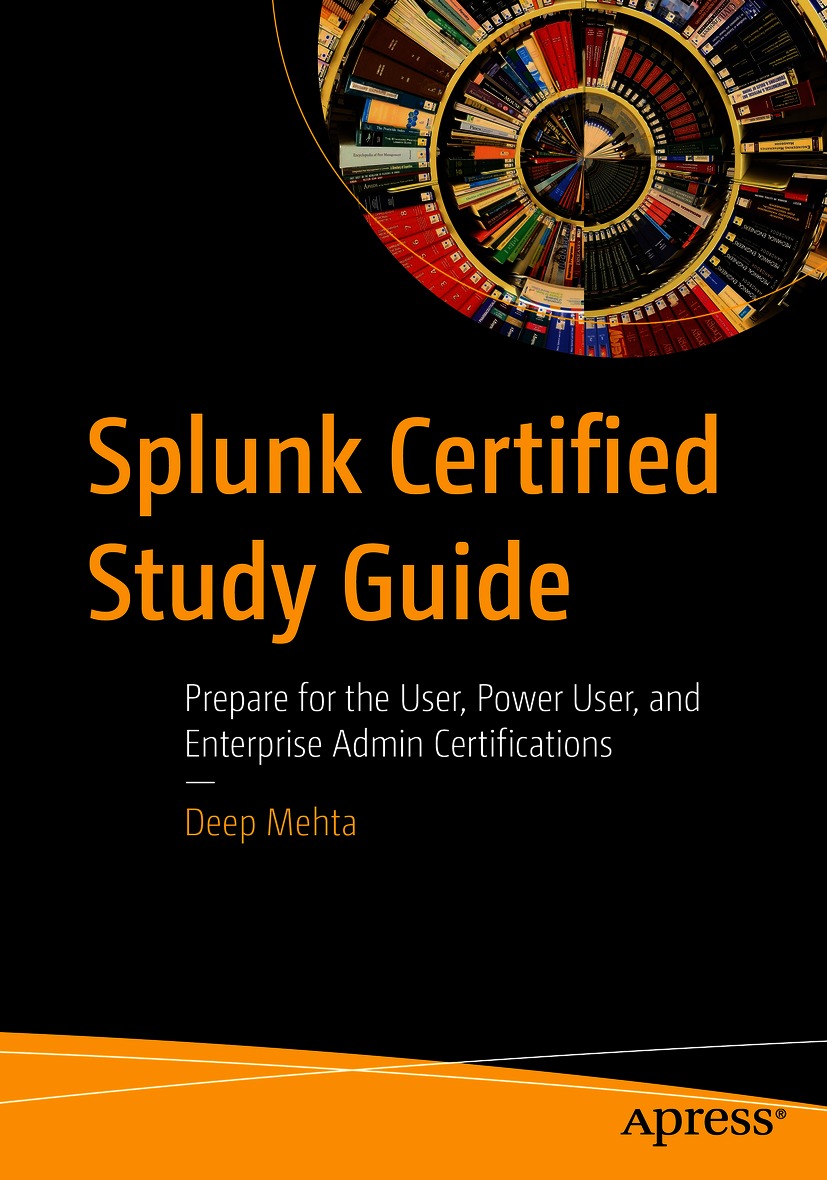Deep Mehta
Splunk Certified Study Guide
Prepare for the User, Power User, and Enterprise Admin Certifications
1st ed.

Logo of the publisher
Deep Mehta
Printserv, Mumbai, India
Any source code or other supplementary material referenced by the author in this book is available to readers on GitHub via the books product page, located at www.apress.com/978-1-4842-6668-7 . For more detailed information, please visit http://www.apress.com/source-code .
ISBN 978-1-4842-6668-7 e-ISBN 978-1-4842-6669-4
https://doi.org/10.1007/978-1-4842-6669-4
Deep Mehta 2021
Standard Apress
Trademarked names, logos, and images may appear in this book. Rather than use a trademark symbol with every occurrence of a trademarked name, logo, or image we use the names, logos, and images only in an editorial fashion and to the benefit of the trademark owner, with no intention of infringement of the trademark. The use in this publication of trade names, trademarks, service marks, and similar terms, even if they are not identified as such, is not to be taken as an expression of opinion as to whether or not they are subject to proprietary rights.
The publisher, the authors and the editors are safe to assume that the advice and information in this book are believed to be true and accurate at the date of publication. Neither the publisher nor the authors or the editors give a warranty, express or implied, with respect to the material contained herein or for any errors or omissions that may have been made. The publisher remains neutral with regard to jurisdictional claims in published maps and institutional affiliations.
Distributed to the book trade worldwide by Springer Science+Business Media New York, 1 New York Plaza, New York, NY 10004. Phone 1-800-SPRINGER, fax (201) 348-4505, e-mail orders-ny@springer-sbm.com, or visit www.springeronline.com. Apress Media, LLC is a California LLC and the sole member (owner) is Springer Science + Business Media Finance Inc (SSBM Finance Inc). SSBM Finance Inc is a Delaware corporation.
This book is dedicated to the late Mr. Amit Mahendra Mehta. This book would not have been possible without his blessing. Where I am today is because of him.
Introduction
Splunk is a software technology for monitoring, searching, analyzing, and visualizing machine-generated data in real time. This book discusses the roles of a Splunk admin and explains how Splunk architecture can be efficiently deployed and managed. It covers everything you need to know to ace the Splunk exams. The book is written to be used interactively and includes practice datasets and test questions at the end of every chapter.
This book is divided into four modules, and three modules are dedicated to the exam.
The first module comprises six chapters dedicated to passing the Splunk Core Certified User exam and the Splunk Core Certified Power User exam. It covers installing Splunk, Splunks Search Processing Language (SPL), field extraction, field aliases and macros in Splunk, creating Splunk tags, Splunk lookups, and invoking alerts. You learn how to make a data model and prepare an advanced dashboard in Splunk.
The second module is dedicated to the Splunk Enterprise Certified Admin exam and consists of four chapters. It covers Splunk licenses and user role management, Splunk forwarder configuration, indexer clustering, Splunk security policies, and advanced data input options.
The third module also focuses on the Splunk Enterprise Certified Admin exam, but its chapters teach admins to troubleshoot and manage the Splunk infrastructure.
In the fourth module, you learn how to set up Splunk Enterprise on the AWS platform, and you are introduced to some of the best practices in Splunk.
At the end of every chapter is a multiple-choice test to help candidates become more familiar with the exam.
Acknowledgments
I am grateful to all my readers for choosing this book. I am also grateful to my parents, Paresh and Rupa Mehta, and my family and friends for their support.
I would like to thank Sanket Sheth of Elixia Tech. for providing the dataset, and a very special thanks to Neha Doshi for extending her support and providing guidance.
Table of Contents
Part I: Splunk Architecture, Splunk SPL (Search Processing Language), and Splunk Knowledge Objects
Part II: Splunk Data Administration and System Administration
Part III: Advanced Splunk
About the Author
Deep Mehta
is an AWS Certified Associate Architect (ongoing), Docker Certified Associate, Certified Splunk Architect, and Certified Splunk User, Power User, and Admin. He has worked with the Splunk platform since 2017 and has related consulting experience in the telecommunication, aviation, and health care industries. In addition to his passion for big data technologies, he loves playing squash and badminton.
About the Technical Reviewer
James Miller
is an innovator and senior project lead and solution architect with 37 years of extensive design and development experience in multiple platforms and technologies. He leverages his consulting experience to provide hands-on leadership in all phases of advanced analytics and related technology projects. His work includes recommendations on process improvement, report accuracy, adoption of disruptive technologies, enablement, insight identification, statistics for data science, predictive analytics, big data visualization, Watson analytics, and implementing and mastering Splunk.
Part I Splunk Architecture, Splunk SPL (Search Processing Language), and Splunk Knowledge Objects
Deep Mehta 2021
D. Mehta Splunk Certified Study Guide https://doi.org/10.1007/978-1-4842-6669-4_1
1. An Overview of Splunk
Deep Mehta
(1)
Printserv, Mumbai, India
Splunk is a software technology for monitoring, searching, analyzing, and visualizing machine-generated data in real-time. This tool can monitor and read several types of log files and store data as events in indexers. It uses dashboards to visualize data in various forms.
This chapter discusses the basics of Splunk, including its history and architecture, and delves into how to install the software on local machines. You see the layout of the Splunk Enterprise Certified Admin exam. And, you learn how to add user data and a props.conf file , and you learn the process of editing timestamps, which is useful in the later chapters. A few sample questions are at the end of the chapter.
Summing it up, this chapter covers the following topics.

